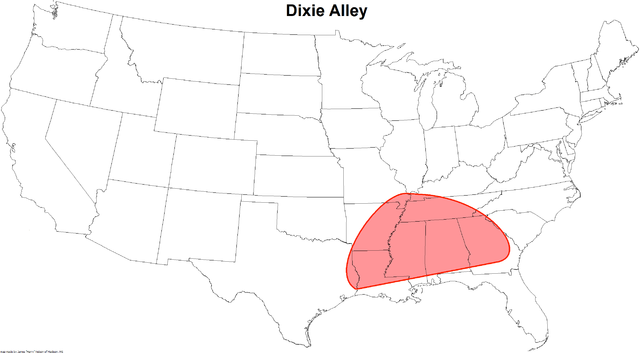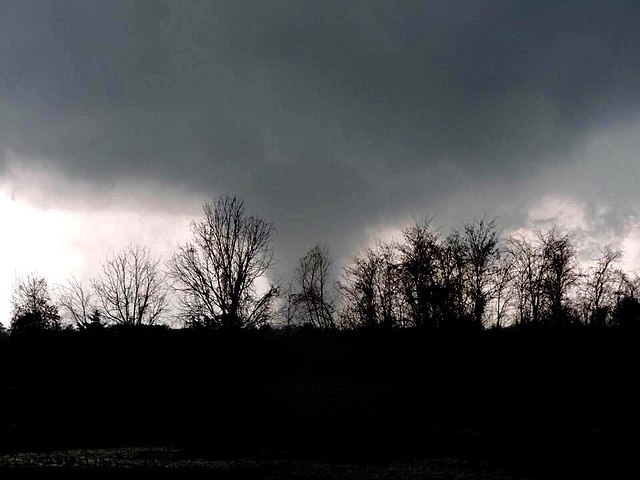Dixie Alley Facts
Are you looking to learn about the area or region commonly referred to as Dixie alley? Then you've come to the right place! We put this section together to give students, teachers and/or tornado enthusiast as place to get Dixie alley facts and information.
It's important to remember that the facts and information on this page are only specific to the United States. If you would like to see information added or would like to report inaccurate information please contact us.
- The term Dixie alley was first used in 1971. It was coined by Allen Pearson, a director of the Storm Prediction Center after witnessing a violent and deadly tornado outbreak on February 21, 1971.
- Dixie Alley is a nickname given to the areas of the southern United States. This area has a high frequency of strong, long-track and violent tornadoes.
- The Dixie Alley region includes area of the lower Mississippi Valley. It spans from eastern Texas and Arkansas across Louisiana, Mississippi, Tennessee, Alabama, Georgia, to upstate South Carolina and western North Carolina.
- Although tornadoes are less frequent in Dixie Alley, compared to the Tornado Alley, it has more deaths because of relatively higher numbers of strong long tracked tornadoes and higher population density of this region.
- New research indicates that Dixie Alley just the extension of the more famous Tornado Alley.
- Tornadoes in this area are long-tracked and deadly and often occurs during the night and early morning.
- Tornadoes in the Dixie Alley are often partially or fully wrapped in rain making it hard for storm spotters and chasers, law enforcement, and the public to spot.
- Tornadoes in this region often occurs in early spring and late autumn. It can continue also throughout the winter and into late spring.
- Some expert considers the Dexie Alley as the more violent and deadly neighbor of the Tornado Alley.
- Some notable tornado outbreaks in the region includes: Great Natchez Tornado, the 1884 Enigma tornado outbreak, the April 1924 tornado outbreak, the 1932 Deep South tornado outbreak, the 1936 Tupelo-Gainesville tornado outbreak, the April 1957 Southeastern tornado outbreak, the 1984 Carolinas tornado outbreak, and the November 1992 tornado outbreak.
Map of Dixie Alley

Above is a map of the area commonly known as Dixie alley, marked in red.
